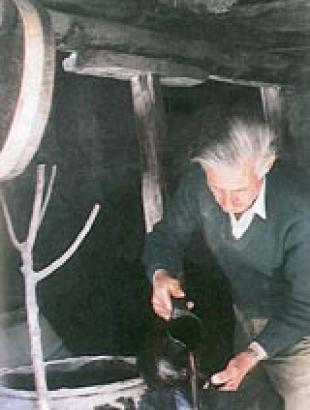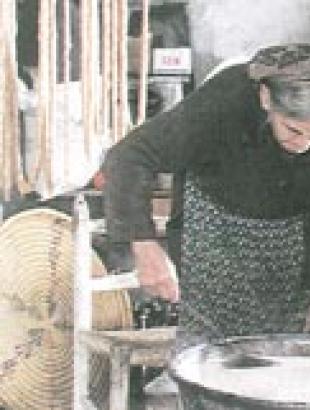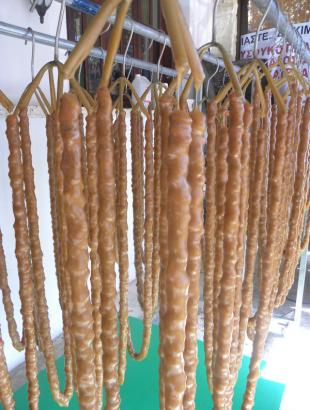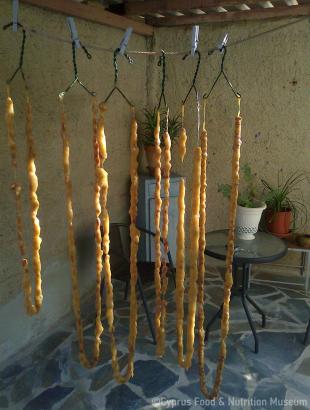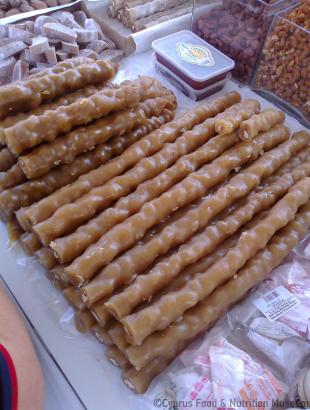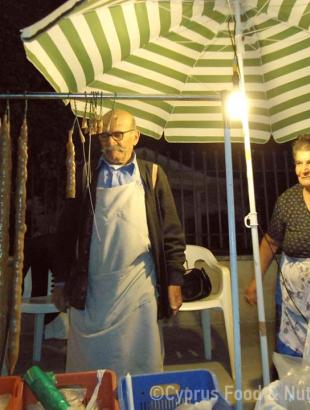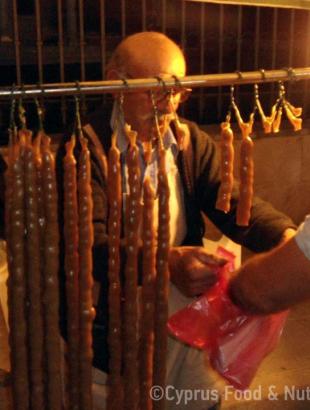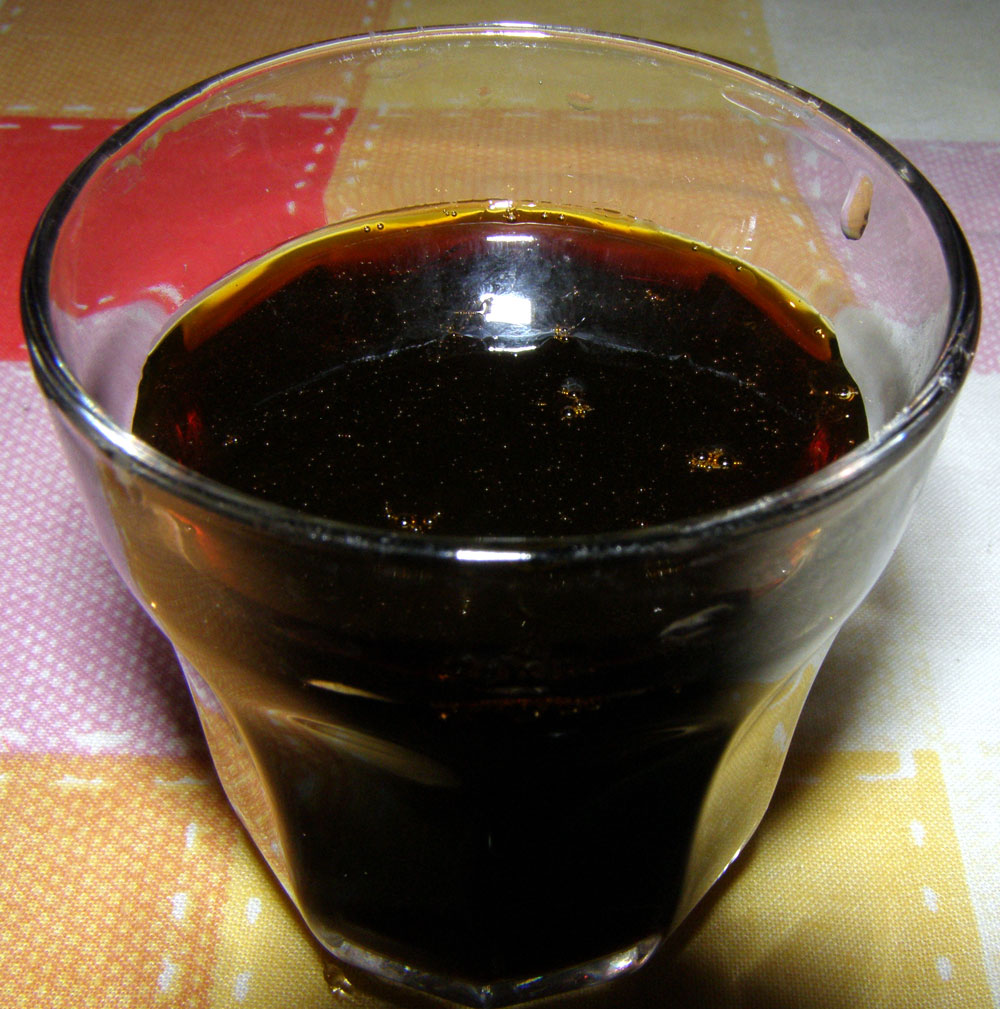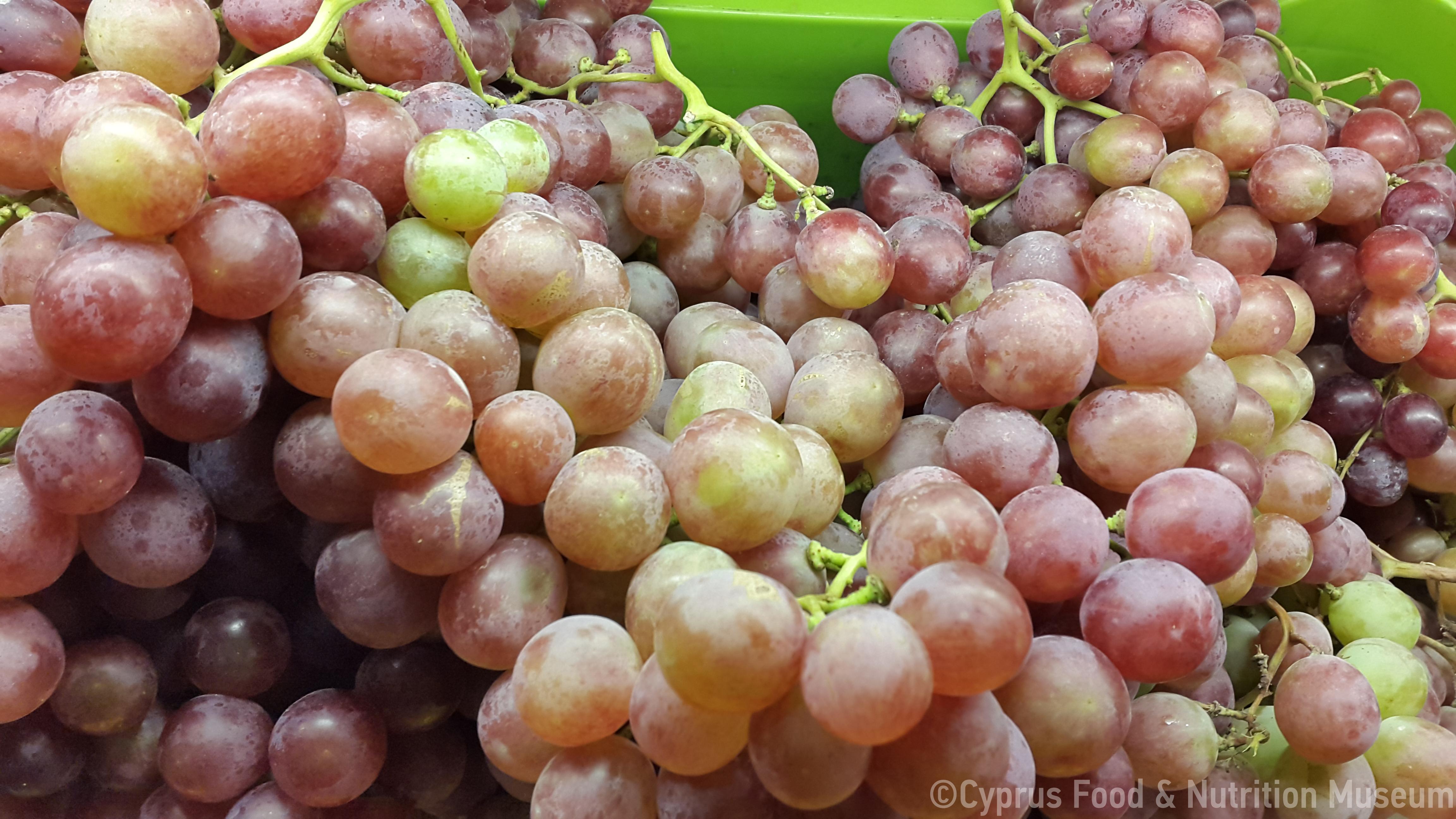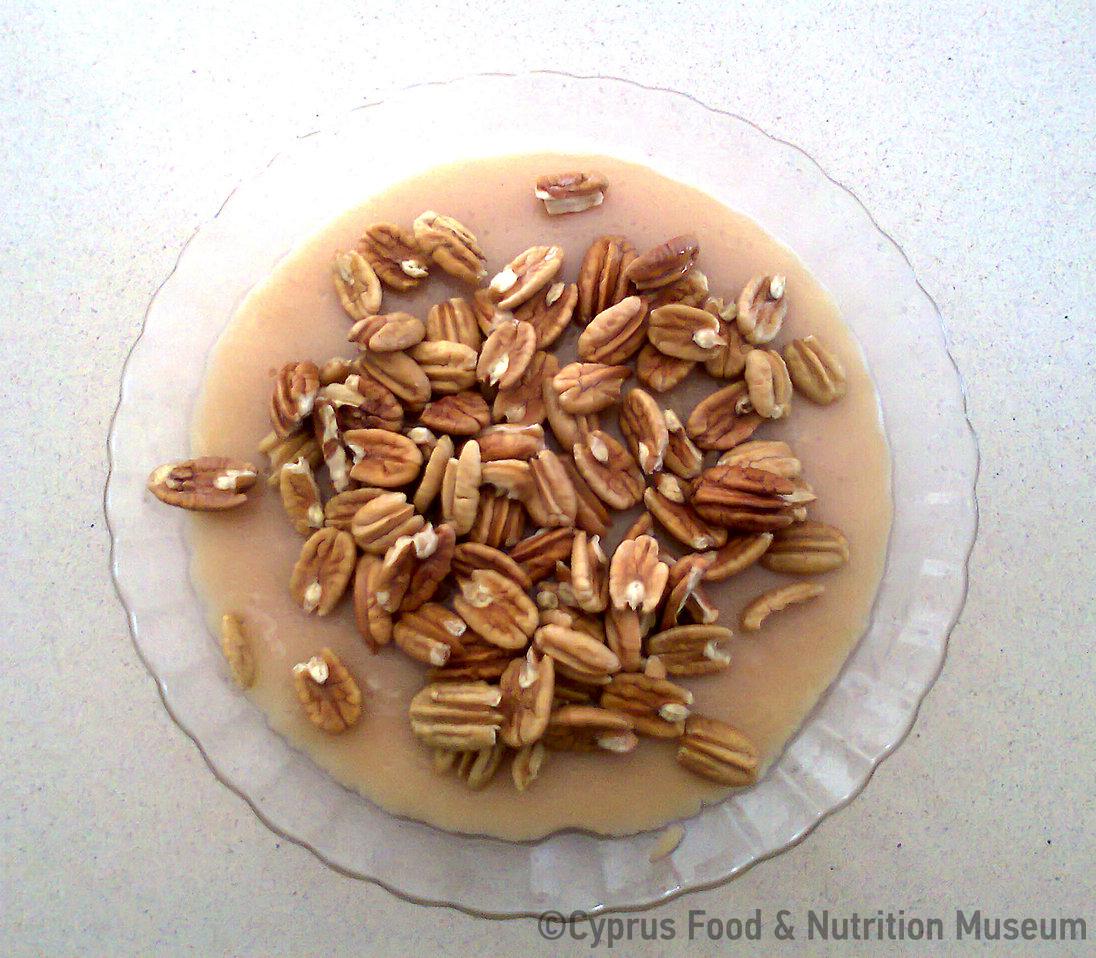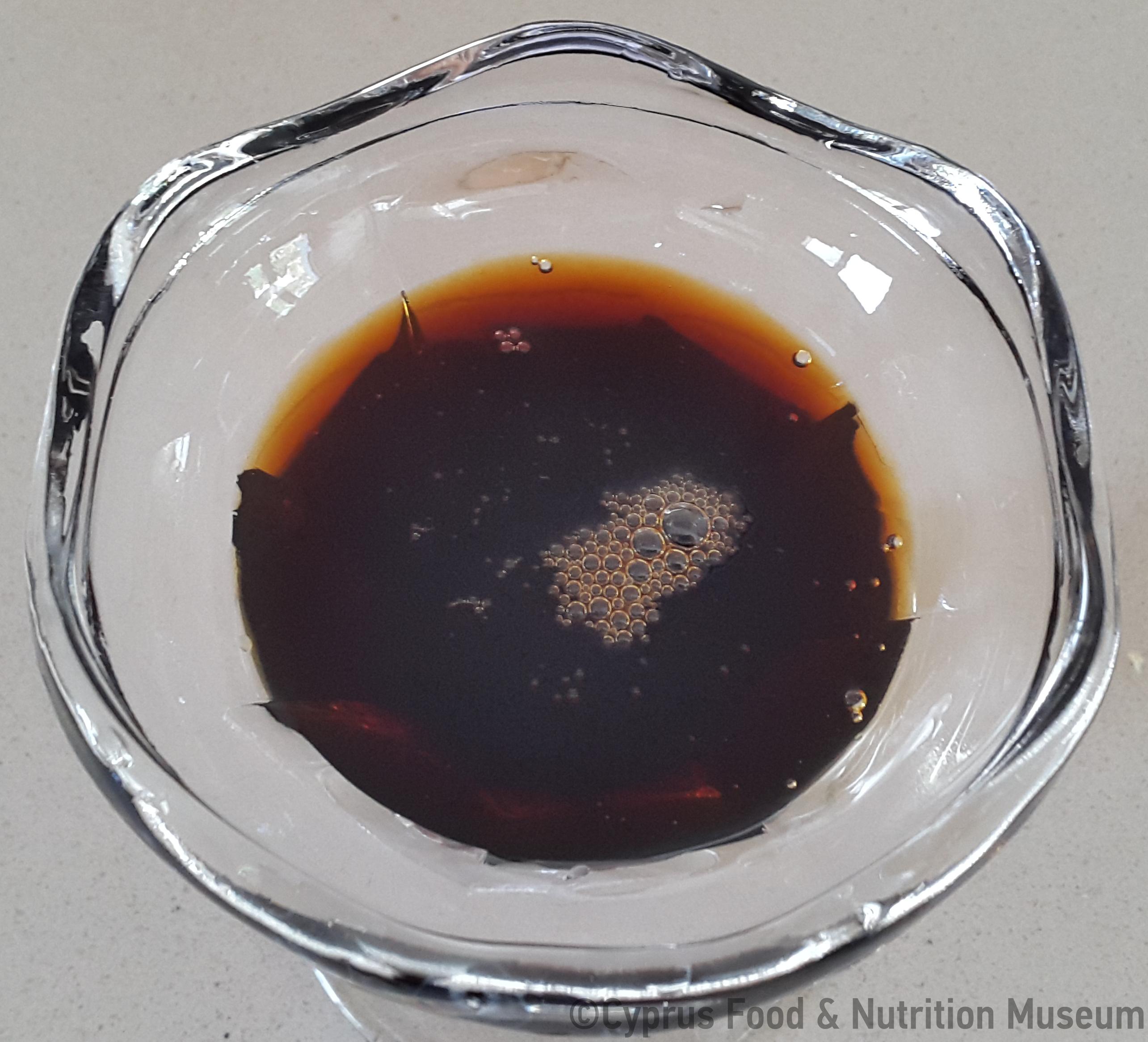S̆ous̆oukkos is one of the most famous traditional sweets of Cyprus and you will find it in villages where grapes are cultivated.
Name - Recipe
A sweet made of grape must and almonds or walnuts.
Version A:
grape must
white soil
flour
nuts (almonds or walnuts)
Version B:
2 canteens of grape must (8 litres)
1½ kg of flour
rose geranium
rosewater
vanilla
almonds and walnuts
Version C-D:
ppalouzes
almonds or walnuts
Version A:
By pressing the grapes take the distillate, the so-called grape must, and put it in a special large cauldron on the fire. When it starts to boil, pour into the cauldron a special soil called asprochoma. The addition of the soil makes the must cleaner and sweeter. As the must boils, use a ladle to constantly remove all the impurities that rise to the surface. Next, mix flour in a ratio of 1 oka (1.270kg) of flour for 8 okas of must and begin stirring over the fire (heat) until the mixture is cooked. Almond kernels or walnut kernels are threaded depending on your choice and at the end of the thread make a katsunin (a loop) to be able to hang them later, Dip the threads into the mixture (ppalouzé) as it is boiling, and hang them for a few hours to dry. Repeat the process either on the same day (after having prepared ppalouzé once more) or on the following day. Make three to five dips in the ppalouzé. Leave them hanging for 5-6 days to dry, unless you prefer to consume šou šoúkkos while fresh.
Version B
"Soak the almonds in water a day or two before preparing the šoušoukko in order to be dry by then. Walnuts do not require soaking in water. When the almonds are dry, pierce them in the middle with the needle so that a thread is inserted in the almonds. When the threads are ready, take hangers or V-shaped wood and tie them tightly onto them so as to hang them up to dry later. Prepare the ppalouzé and when you pour a bit on a plate and see that it comes o ff then it is ready for dipping the threads in. You have to dip them strongly and deep enough to get the mixture to stick all over the threads. Then hang them to dry. If in the process you see that the ppalouzé starts to thicken, add some grape must to thin it out. When the mixture on the threads is dry, dip them one more time. It may take dipping an extra time to become thick enough so you cannot see the nuts. Finally leave the threads with šoušoúkkos hanging for a whole day. Šoušoúkkos is ready to eat or to be stored in the refrigerator when it is not sticky.” (Androulla Christou, 58 years old from Agrilia, Limassol)
Version C
Soak the almonds in water and thread them with the help of a needle in a thread about 1-2m long. The walnuts do not need to be soaked. Once the ppalouzé is ready, insert the threads with the nuts. Remove the strings and hang them on branches to dry in the sun. Once they are thoroughly dry, dip them once again into the ppalouzé. (Spyroula Christodoulou, Potamiou, Limassol)
Version D
Šoušoúkkos is made using the ppalouzé mixture as a base. First, nuts or almonds are threaded through a cotton thread. Then dipped into the ppalouzé. Continue dipping it in over and over again (each time a layer is added on top of the previous one), until šou šoúkkos is 4 to 6 cm in diameter. Once it is dry, it lasts for a long time. (Kythraiotou 2013, 60).
Boiling.
Usually s̆ous̆oukkos is dipped 3 times in the ppalouzé. Usually s̆ous̆oukkos is made with almonds, because walnuts cannot be preserved for long, while s̆ous̆oukkos can be kept for a long time in a cool and dry place. (Spiroula Christodoulou, Potamiou - Limassol).
Functional and symbolic role
Šoušoúkkos is an excellent treat with zivania or wine (Spyroula Christodoulou, Potamiou - Limassol).
Additional information and bibliography
Šoušoukkos was made for private use as soon as every household finished its harvest. Today, s̆ουσ̆ukkos is made both by private individuals and by small enterprises or large firms dealing with grape products, during the harvest season, from August to September or a little earlier or later.
In the old days, after letting it dry for about twenty days, it was cut into pieces of about 30cm and stored in baskets (Spyroula Christodoulou, Potamiou - Limassol).
Kythraiotou F. (2013), Marathasa Gastronomic Guide, Ministry of Education and Culture - Pedagogical Institute, Nicosia.
Oral testimonies: Spyroula Christodoulou, Potamiou - Limassol. Recording: Maritsa Christodoulou, 2010. Androulla Christou, 58 years old, Agridia - Limassol. Recording: Zenovia Charalambous, October 2010. Edited by Stalo Lazarou.
Stalo Lazarou Petroula Hadjittofi, Argyro Xenophontos
